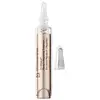What's inside
What's inside
 Key Ingredients
Key Ingredients

No key ingredients
 Benefits
Benefits

No benefits
 Concerns
Concerns

No concerns
 Ingredients Side-by-side
Ingredients Side-by-side

Hydrogenated Polyisobutene
EmollientJojoba Esters
EmollientCocos Nucifera Oil
MaskingSqualane
EmollientCopernicia Cerifera Wax
Ethylene/Propylene/Styrene Copolymer
Benzyl Nicotinate
Skin ConditioningEctoin
Skin ConditioningSodium Hyaluronate
HumectantHydrolyzed Sodium Hyaluronate
Skin ConditioningPalmitoyl Tripeptide-38
Skin ConditioningPalmitoyl Tripeptide-1
Skin ConditioningSodium Acetylated Hyaluronate
HumectantPortulaca Pilosa Extract
Skin ConditioningSilybum Marianum Fruit Extract
Skin ConditioningCentella Asiatica Meristem Cell Culture
AntioxidantTrehalose
HumectantBisabolol
MaskingCitrullus Lanatus Fruit Extract
Skin ConditioningPyrus Malus Fruit Extract
Skin ConditioningPersea Gratissima Oil
Skin ConditioningTriisostearin
Skin ConditioningGlycerin
HumectantGlucomannan
Skin ConditioningEthylhexyl Palmitate
EmollientTribehenin
EmollientCetearyl Ethylhexanoate
EmollientSucrose Cocoate
EmulsifyingTrihydroxystearin
Skin ConditioningDimer Dilinoleyl Dimer Dilinoleate
EmollientXanthan Gum
EmulsifyingSorbitan Isostearate
EmulsifyingButylene/Ethylene/Styrene Copolymer
Leuconostoc/Radish Root Ferment Filtrate
AntimicrobialTocopherol
AntioxidantWater
Skin ConditioningLactic Acid
BufferingCitric Acid
BufferingPhenoxyethanol
PreservativeSodium Benzoate
MaskingPotassium Sorbate
PreservativeHydrogenated Polyisobutene, Jojoba Esters, Cocos Nucifera Oil, Squalane, Copernicia Cerifera Wax, Ethylene/Propylene/Styrene Copolymer, Benzyl Nicotinate, Ectoin, Sodium Hyaluronate, Hydrolyzed Sodium Hyaluronate, Palmitoyl Tripeptide-38, Palmitoyl Tripeptide-1, Sodium Acetylated Hyaluronate, Portulaca Pilosa Extract, Silybum Marianum Fruit Extract, Centella Asiatica Meristem Cell Culture, Trehalose, Bisabolol, Citrullus Lanatus Fruit Extract, Pyrus Malus Fruit Extract, Persea Gratissima Oil, Triisostearin, Glycerin, Glucomannan, Ethylhexyl Palmitate, Tribehenin, Cetearyl Ethylhexanoate, Sucrose Cocoate, Trihydroxystearin, Dimer Dilinoleyl Dimer Dilinoleate, Xanthan Gum, Sorbitan Isostearate, Butylene/Ethylene/Styrene Copolymer, Leuconostoc/Radish Root Ferment Filtrate, Tocopherol, Water, Lactic Acid, Citric Acid, Phenoxyethanol, Sodium Benzoate, Potassium Sorbate